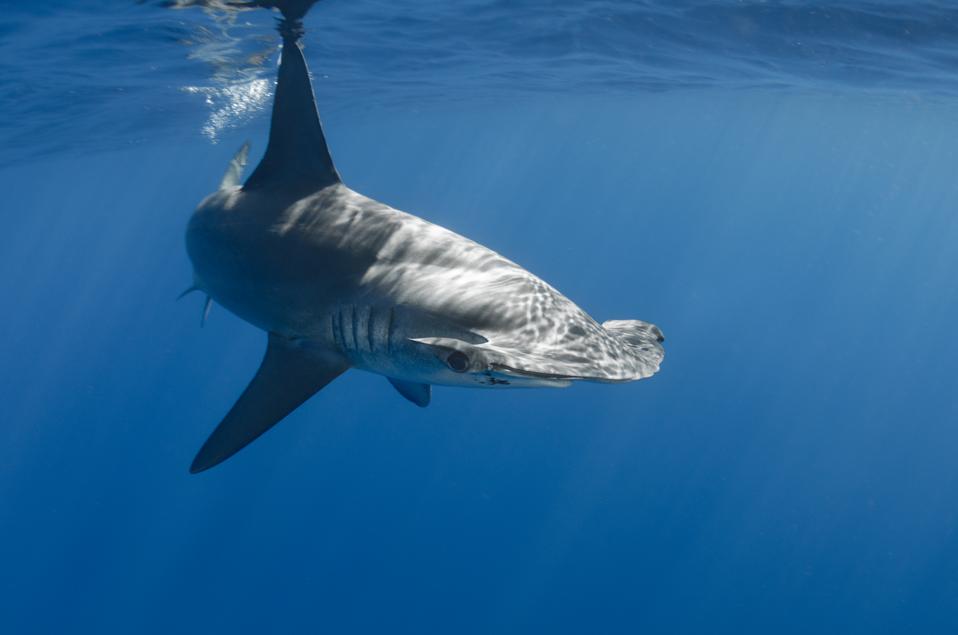A groundbreaking discovery in the waters surrounding Ecuador’s Galapagos archipelago has sparked excitement among marine biologists and conservationists alike. According to a statement released by the national park, the team has identified a potential breeding ground for smooth hammerhead sharks (Sphyrna zygaena), a find described as “very rare” and potentially game-changing for our understanding of these elusive creatures.
“The discovery of these new breeding areas is very important, especially for the hammerhead shark,” said Galapagos National Park ranger Eduardo Espinoza. “It is an iconic species for the Galapagos, but it is in critical danger of extinction.” Found across the Atlantic, Indian and Pacific Oceans in temperate and tropical waters, smooth hammerhead sharks are among the nine recognized species of hammerhead sharks. There is limited data on the species’ life history, though it is presumably at least as biologically sensitive as other hammerheads. If their presence in the Galapagos is confirmed, it would mark a significant milestone as it would be the first documented breeding site for this species in the region. While these majestic creatures have long captured the fascination of scientists, unfortunately, their population has been dwindling. The species is classified as “vulnerable” on the International Union for Conservation of Nature’s list of threatened species due to their fins being highly valued. Due to this, the species is frequently caught with a variety of gears, including longlines, gillnets, purse seines and trawls.
The expedition, led by scientists on behalf of Greenpeace, ventured into the Galapagos Marine Reserve, a protected area teeming with life. Several weeks ago, scientists on the expedition encountered a young female smooth hammerhead near Isabela Island, the largest in the Galapagos archipelago. The team wasted no time in tagging the shark, a crucial step that will allow the researchers to track her future movements and confirm whether she indeed frequents a breeding area. Moving forward, continued research and monitoring efforts will be essential to confirm the significance of this discovery and inform conservation strategies aimed at protecting smooth hammerhead sharks in the Galapagos and beyond. For now, the scientists are gearing up for a sustained effort to gather more data and ascertain the extent of this potential breeding ground.
The specific locations of the nurseries have been kept confidential to ensure the protection of the species. Previously, scientists had identified two other areas with similar characteristics on nearby islands within the Galapagos Marine Reserve. “We managed to include these nurseries in a list of important areas for shark conservation, a new protection category under the IUCN,” Espinoza said.
Thanks to Charles Darwin’s theory of evolution, the Galapagos Islands hold a special place in the annals of scientific history. The archipelago’s isolation and unique environmental conditions have given rise to a plethora of species found nowhere else on Earth, from giant tortoises to flightless cormorants and marine iguanas. This latest discovery, the scientists argue, underscores the importance of preserving the fragile marine environments of the Galapagos. As human activities continue to exert pressure on marine ecosystems worldwide, it is imperative that we take proactive measures to safeguard these vulnerable habitats. Efforts to protect the Galapagos Marine Reserve, one of the largest protected areas in the world, have been ongoing for decades. Strict regulations govern activities in this UNESCO World Heritage Site, such as fishing and tourism to minimize human impact on these delicate ecosystems; however, challenges persist, ranging from illegal fishing to the impacts of climate change and pollution.
Education and awareness also play a crucial role in rallying support for conservation efforts, the team say. As news of this discovery spreads, they hope it serves as a rallying cry for action. Whether through supporting local conservation initiatives, advocating for sustainable fishing practices, or simply spreading the word, the scientists believe each individual can make a difference in preserving the natural wonders of the Galapagos.

